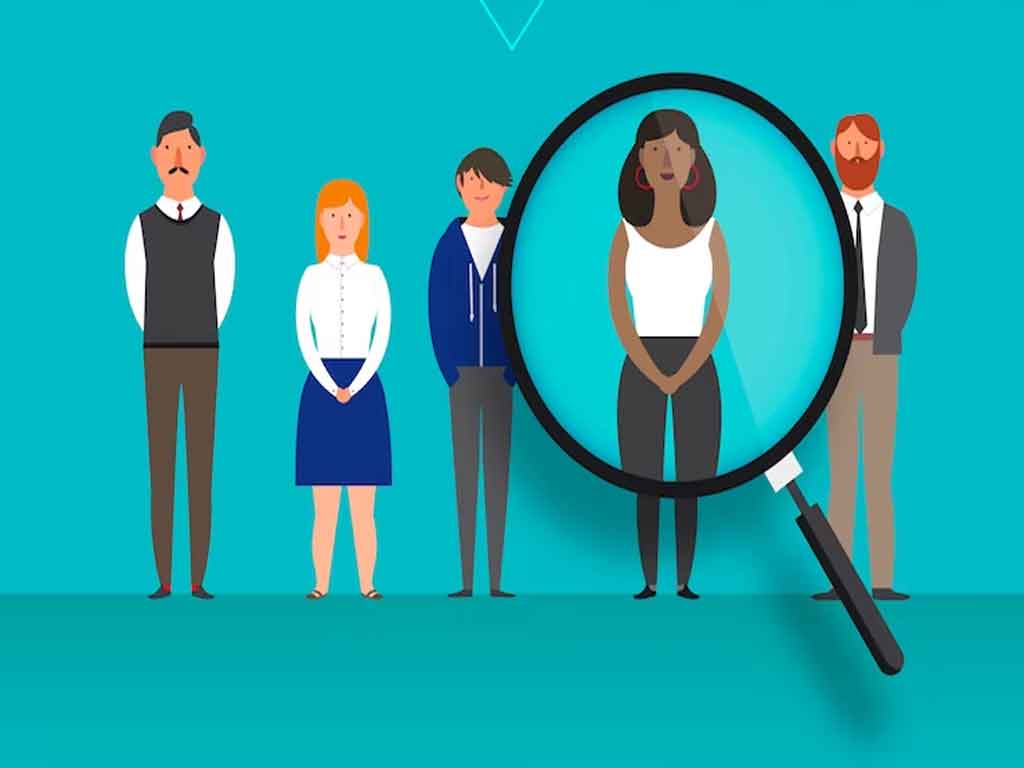
When jobs come in search of us!
There is a joke about a person who got a job offer from Google. It goes like this,
"But I did not send you a job application for that", said the employee.
Google replied, "We know your biodata, you're about to leave the job, you're searching for a job, and what salary you have now"!
This joke might be a little too much for the time being. But there is no doubt that the jobs will be searching for us in the future. It's happening already in many developed countries. The corona period will accelerate this even more.
An active LinkedIn account is prerequisite for securing a job in the world of tomorrow.
Attaining a job after graduation and setting up a great career in the respective field, is the goal of all professionals. But in the changed times, hunting for a job in the traditional way is often ineffective. How can you find a job then? Until a few years ago, advertisements were placed in newspapers and other publications. It still exists. Later, with the advent of the Internet, applications began to be accepted through the websites of the corresponding institutions and via their email. There are also other job portals today. Social networking sites are also being used nowadays for this purpose. This is where the relevance of LinkedIn comes in.
We all know about social networking sites. LinkedIn is also a social networking system similar to that of Facebook and Twitter. There is only a slight difference. Unlike Facebook and Instagram, it is not for entertainment purposes. Instead, LinkedIn is a professional networking site for expanding business connections, sharing work experience and resumes, and for seeking employment.
You can create your own LinkedIn profile just like your Facebook profile. But there you are expected to provide your professional information. For example, a LinkedIn profile can include your educational qualifications, occupation, areas of interest, work-research experience, work skills, and your referrals from co-workers.
Once the profile is created, what next?
LinkedIn has profiles of people and organizations belonging to a variety of professions. Connection requests can be sent and people can be followed based on your areas of interest. Like other social media platforms, you can also share your thoughts and opinions there.
Can I get a job if I create a LinkedIn profile?
This is the first question that many people ask when talking about LinkedIn. I'd say No. But the answer is that it will definitely help increase your chances. We just have to be aware and act accordingly. How?
LinkedIn showcases some of the best teachers, researchers, entrepreneurs and scientists in their own fields. The main advantage of having a LinkedIn profile is that you will have the opportunity to connect with these experts in the field of your interest and those working in similar arenas. You can communicate with them and learn about their area of work.
Most organizations around the world have their presence in LinkedIn. You can monitor their ‘job updates' and submit your applications through LinkedIn. It is not necessary to prepare a separate resume each time.
Who can join LinkedIn?
One may begin as soon as the twelfth class is over. Start making connections with people in topics or areas of your interest. Students studying (both professional and non-professional courses), beginners in the field of employment and those currently employed can all become members there.
What to look out for?
- You must have an active email id. This email id should be something that looks professional. Using an ID like superman64@gmail.com or hotmale@hotmail.com is not suitable for job search. If you are actively looking for a job, you should check your email twice a day.
- You must have a LinkedIn profile photo. Do not select pictures of flowers, birds or landscapes for this purpose. Your own photo must be used. But avoid photos typical for Facebook or Instagram. Pictures that are funny or depict usage of intoxicating substances should be avoided. Use very formal photos that clearly show your face. Do not use pictures taken while attending weddings or parties. Selfies and group photos should definitely be avoided.
- Clearly include your education, work experience, research and skills in the profile. It's okay even if it takes a whole week to create a good profile. Be careful not to make any spelling mistakes in the profile. Once finished, it's a good idea seeking a friend's help to review the content.
- Make connections slowly. You can search and find people from your particular domain, on LinkedIn. You can add people, who've studied at the institution you've previously studied at and colleagues at an organization you've worked for, to your LinkedIn profile. There is no limit of five thousand friends like Facebook. Those who are going to hire you later, will notice that you have bigger and better connections. Feel free to send a connection request, to anyone you know outside of LinkedIn too! Take note that people from outside Kerala and outside India should also be in the list. It is of course, a possibility for a wider world. (Those of you, who are interested in reading this post, can send us a connection request).
- LinkedIn has many groups that are professionally beneficial. Follow those groups which hold your interests. You should also pay attention to the ongoing comments and participate in the discussions.
- The LinkedIn profile should be updated regularly. If you have the ability to write on your subject, do write articles. LinkedIn is also a place to share your thoughts and knowledge. Try not to make linguistic mistakes. There is nothing wrong with asking help from someone for this. The language used should always be clear and polite. If you cannot write, observe what other people are writing, comment on posts, ask questions, and share articles that follow the latest trends in your profession. If anyone comments on this, please reply immediately. There is nothing wrong with spending an hour every morning on LinkedIn while actively looking for a job.
- You should also check your daily emails from LinkedIn. Make sure not to forget this rule, if you have already applied for any jobs. Try to reply to the messages received on LinkedIn or via e-mail within 24 hours. The answers should be coherent and respectful. Do not reply in the same mindless manner that you chat on WhatsApp or Messenger.
- It's great to be endorsed by your colleagues or teachers on your expertise, in the subjects you specialize, in LinkedIn. Others pay attention to all these.
- When you get a new LinkedIn contact, do not immediately go and send your biodata and say "Sir, please give me a job". Instead, say ‘hello' first, inform how you got to their profile, and mention that it looks good (everyone loves to be praised). A few days later, step in with some career doubts. Don't ask for an opportunity there either. If your profile is good and the behaviour is professional, they will definitely tell you if there are any chances.
- Do not lie on a LinkedIn profile as you would on a biodata. In your LinkedIn profile, do not indicate that you are active, let's say in the field of artificial intelligence, as you state on a white paper or in a pdf. Remember that others can easily find out, how many articles you've shared about artificial intelligence, in the last six months.
- LinkedIn now acts as a training centre too. Training and certification in various subjects are available there. Learn the courses you need. Others will notice that you are learning new subjects as well.
- There is nothing wrong with taking a premium account while you are actively looking for a job. If you are consistent on the platform, LinkedIn itself will offer you this for free, for one month. Use it. Most importantly, you will get information about who viewed your profile page, through this feature.
The next step is how to maintain the profile.
There is another side as well to what we see in the LinkedIn system. There are people inside looking for job seekers. They care about what you do. In the future, hiring agencies might be looking out for people using Big Data Analytics. In such a scenario, everything we do, knowingly or unknowingly, will affect our work. Once they see that our profile and approaches are suitable for their organization, they will come to us and ask us if we would like to apply to their organization (this is already the practice in many countries).






